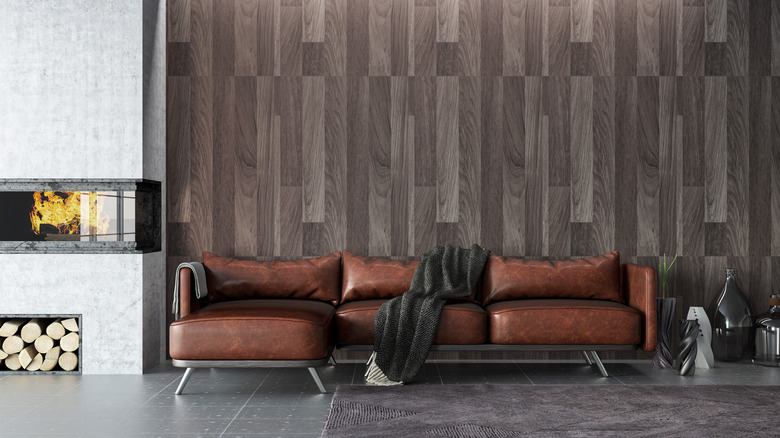How To Whitewash Dark Wood Paneling
Maybe you loved the dark wood paneling when you put it in, but you're ready for a change. Or maybe you hate the wood paneling that came with your new home but don't want to pay to renovate the room. In any case, whitewashing is the perfect way to transform dark wood paneling. Adding a coat of thinned white paint will immediately brighten and modernize the space. Plus, a room with whitewashed wood paneling feels larger than a room with dark walls, making for an instant upgrade.
Alternatives to Whitewash Paneling
Alternatives to Whitewash Paneling
The classic method for whitewashing brick, wood, and other surfaces is to use white paint that has been thinned with water, allowing the wall's texture and some of its base color to show through the paint. It's not the only way to whiten walls, however.
Homeowners sometimes whitewash wood walls using lime wash, which is derived from crushed limestone. Limewashed wood walls have a chalkier, more rustic finish than walls whitewashed with latex paint. That said, manufacturers generally say that you shouldn't limewash wood paneling and that this product is more appropriate for brick and plasterboard walls than wood. But they're your walls, and you're free to experiment with different kinds of paint to achieve the look you want.
A product called liming wax can also be used to give dark wood a whitish tint. Liming wax is applied to wood using a stiff brush, pushing the wax into the grain of the wood. The top layer of wax is then wiped away.
Things Needed
-
Mask
-
Bucket
-
Paint stirrer
-
Fans
-
Polyurethane sealant (optional)
How to Whitewash Paneling
1. Prepare the Walls
Sand the walls to remove any clear protective coating. Don't skip sanding when you're painting paneled walls since the paint won't stick well to wood that has a glossy texture, and paneled walls are typically not raw wood. Sanding also removes any bumps and imperfections that would be noticeable once the wall is painted white.
Lay down a drop cloth at the base of the paneled wall. Use fine-grit sandpaper to sand the entire wall. Wear a mask and eye protection while you work to protect yourself from breathing in dust. Wipe down sanded walls with a dampened cloth to remove any dust. Use painter's tape to cover any edges that you don't want to whitewash (or try a paint edging hack that makes painter's tape unnecessary).
2. Prepare the Whitewash
Pour equal parts of white latex paint and water into a bucket. Use a paint stirrer (or an old wooden spoon or coat hanger) to combine them. Open windows and/or turn on fans to ventilate the room before you start painting.
3. Apply the Paint
Use an angled brush to paint one panel at a time. Let the paint soak into the wood for a minute or so and then use a dampened cloth to wipe down the entire panel and remove excess paint. Repeat this process until the entire wall is finished. Working one panel at a time prevents you from creating noticeable overlap lines, which can happen when you paint one random section of wall at a time.
Let the wall dry completely. Repeat the process to add a second coat if you want to create a more opaque appearance.
4. Seal Whitewashed Walls
It's not strictly necessary to cover your whitewashed walls with a coat of sealant, but sealing painted wood protects your paint job and makes it easier for you to clean the walls in the future. Apply a layer of polyurethane or another wood-safe sealant and let it dry according to the package directions.
